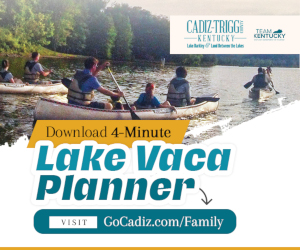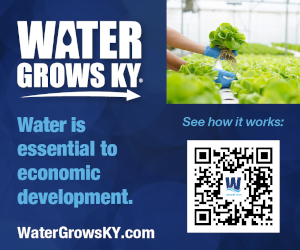
On July 7, the Ark Encounter, a 510-foot-long, seven-story-high timber-frame recreation of Noah’s Ark, will open in Williamstown. As the newest themed attraction of the Petersburg, Ky.-based Answers in Genesis group, which opened the Creation Museum nine years ago, the Ark expects to welcome from 1.4 to 2.2 million visitors annually, said Answers in Genesis President Ken Ham, citing a 2015 economic impact report generated by America’s Research Group.
This summer’s Ark Encounter opening will only reinforce and broaden Northern Kentucky’s draw of the faith-based travel market – a niche that has become one of the area’s “largest marketing segments,” according to Eric Summe, president and CEO of meetNKY, the Northern Kentucky Convention and Visitors Bureau.
Answers in Genesis plans to offer multiday “park hopper” tickets to guests, encouraging them to extend their visits to allow time to visit both attractions, which are roughly 45 minutes apart by car. Since the Ark’s opening date was announced, fall ticket bookings to the Creation Museum are up 300 percent, said Ham – evidence of the popularity of the dual-ticket option. As a result, his company expects to double attendance at the Creation Museum from its current 300,000 average to 600,000 guests a year once the Ark opens. And it estimates that the 10-year economic impact to the region from both attractions will be nearly $4 billion, Ham said.
Long known for bourbon and horses – which are attracting more attention than ever – Kentucky has found new success marketing to visitors who want to experience our beautiful natural areas, urban corridors, craft breweries, wineries, adventure tourism destinations, state and national parks and more.
The soon-to-open Ark and its potential economic boon to Northern Kentucky is just one bright spot among many in Kentucky’s booming travel and tourism industry, which contributed more than $13 billion to Kentucky’s economy – including $8.3 billion in direct expenditures – in 2014, according to an Economic Impact of Kentucky’s Travel and Tourism Industry report released by the Kentucky Tourism, Arts & Heritage Cabinet last May.
New tourism numbers expected by midyear are anticipated to show ongoing improvement.
“We are so blessed to be in the most beautiful state in the nation. It’s so easy to sell Kentucky,” said Kristen Branscum, Kentucky Department of Travel commissioner. “Other people don’t have what we have, and people want to come here.”
“Overall, tourism is growing and expanding in the state. I’d say that right now, there isn’t much that’s not working,” said Hank Phillips, president and CEO of the Kentucky Travel Industry Association.
Signs of the tourism industry’s success in Kentucky abound: Branscum and Phillips noted that visits by international travelers are up, especially among guests from Australia and Western Europe.
Bus tour business about to get better
The state’s Bourbon Trail and Kentucky Bourbon Trail Craft Tour – which together amassed 900,000 visits last year – continue to add new locations, tasting rooms and visitor experiences. Adam Johnson, director of the Kentucky Bourbon Trail for the Kentucky Distillers’ Association, projected that 15 to 20 new distillery operations will open over the next 12-18 months in Kentucky.
In Northern Kentucky, the 2015 economic impact of tourism in Boone, Kenton and Campbell counties totaled $366 million – a $26 million increase over 2014 totals, according to a report released in March by meetNKY. Statewide, 2016 hotel occupancy rates are trending roughly 10 percent higher than for the same period in 2015, with this February’s rate beating any February on record, according to Phillips.
In January, Louisville hosted the American Bus Association (ABA) Marketplace, marking the first time the event took place in Kentucky in its
40-year history. Roughly 3,500 delegates attended the four-day convention, including 925 tour and motorcoach operators from across the United States who use the Marketplace to purchase travel packages and plan their tour itineraries several years in advance.
The event saw “a huge delegation of travel suppliers from Kentucky,” said Nicole Trigg, director of tourism development with the Louisville Convention and Visitors B u r e a u . “ T h e r e w e r e many suppliers from Louisville, all the way to travel suppliers from Paducah, Lexington and Northern Kentucky. Everyone from across the state was there representing.”
The ABA estimates that destinations typically enjoy a 10-25 percent increase in their motorcoach business within three to five years of hosting the Marketplace event, and Trigg is optimistic that Louisville and Kentucky as a whole will see a significant uptick in bus tour business as a result.
“The convention had a $6 million economic impact while the delegates were in town, but to see a forecast of a potential 10 percent increase in our motorcoach business in the future is even better,” Trigg said. “ABA did a survey of operators after they were here, asking them if their impression of Louisville as a tour destination had been impacted as a result of ABA being held here, and the great majority responded that they would be much more likely to book tours here in the future.”
The point is: If Kentucky can get visitors to take a look, the state often sells itself. And this fact has direct benefits for those of us who live here. In 2014, the tourism industry generated nearly $1.37 billion in tax revenues to government, including $1.19 billion to the state and nearly $176.1 million locally, according to the Kentucky Tourism Cabinet’s most recent economic impact report. Additionally, the May 2015 report, prepared by Certec Inc., credited the tourism industry for supporting 179,963 jobs and $2.9 billion in tourism-generated wages for Kentucky workers in 2014.
Becoming a key economic driver
Pointing to its $13 billion impact to the state’s economy in 2014, Kentucky travel and tourism executives agree: It’s well past time for a widespread awareness of tourism’s role as one of the state’s top economic drivers.
“Not nearly enough people within Kentucky realize that tourism is one of the state’s major industries,” said Phillips. “If you ask most Kentuckians to name the top two or three major industries in our state, agriculture would probably be on there for many people. Coal, certainly. And automotive as well, since I think there’s a front-of-mind awareness that the automotive industry in the state has really grown. But the fact is, tourism belongs on that list. There’s no doubt that all of these are huge industries for our state, but the perception by the public, and then in turn, by elected officials, policy makers and the media, has not caught up to the reality” of tourism as a major industry for the state.
To validate his point, Phillips referred to economic impact reports from other Kentucky industries, noting that the value of coal mined in Kentucky was $4.96 billion in 2013, according to the Kentucky Coal Facts 2014 report. Kentucky’s agricultural cash receipts in 2014 were $6.5 billion – a record for the industry – according to the 2015-2016 Kentucky Agricultural Economic Situation and Outlook report by the University of Kentucky College of Agriculture, Food and Environment.
Of the industries that are top-of-mind for most Kentuckians, only the automotive industry – with an economic impact of $14.3 billion, according to a 2015 University of Louisville report prepared for the Kentucky Automotive Industry Association – has a larger role in impacting Kentucky’s economy, when compared to tourism.
“The point isn’t to make a comparison to these other industries to show that we are bigger than them, but to rather show that along with them, tourism belongs in any conversation about ‘major Kentucky industries,’” Phillips said.
“We need to focus in Kentucky on tourism as economic development,” agreed Branscum, who notes that sharing this redefined perspective with everyday Kentuckians is a major goal of her new role as commissioner.
“Visitors provide us, on average, about $1,100 dollars in tax savings for Kentuckians. We want to invite these people in and tell our stories. We want everyone, all local communities, to invite visitors in. It helps our checkbooks personally. It helps our quality of life as citizens. It invites new business. People want to visit places where people are happy and proud of where they’re from. That’s what I really want to build upon and impress upon people: We have a tremendous asset in tourism, and every single person can play a role” in its success, said Branscum.
Kentucky is “struggling to meet the needs of education, infrastructure and pensions on a limited budget. But when you consider the sort of public revenue that is generated by tourism – and the much larger amounts going forward that it could be – it’s clear that the tourism industry is very much a part of the solution of helping move Kentucky as a whole forward economically,” Phillips said.
As successful as Kentucky’s tourism industry is currently, Phillips feels its full potential has not yet been tapped, in part because the commonwealth’s budget for travel and tourism marketing is less than most other states.
Kentucky ranks in the bottom 10 states in the country in terms of the dollars appropriated to tourism advertising, and it has the lowest tourism marketing budget of any state in the Southeast, according to Phillips.
“As great as the Kentucky tourism industry is, it could be so much more,” he said. “That tells us, if we’re doing as well as we are right now, imagine what we could do with more funding. The tourism industry of Kentucky is a sleeping giant.”
Unique Kentucky experiences
At Mammoth Cave, crews have been hard at work making nearly $4 million in improvements to the Mammoth Cave Hotel and $6 million in updates to the popular, two-mile long Historic Tour.
The 54-room hotel, which was built in 1965, will re-open on May 15, boasting a new roof, updated HVAC and electric systems and 20 fully renovated sunset terrace lodge rooms. Construction to replace a 1930s-era packed dirt path with pavers, install trail edge guards, and improve stairways and handrails along the Historic Tour is roughly half complete, said Mammoth Cave Deputy Superintendent Bruce Powell. Trail renovations will resume after the summer travel season and will be fully complete in May 2017.
The improvements come at a perfect time: 2016 marks the 200th anniversary of organized cave tours at Mammoth Cave and the 100th anniversary of the National Park Service, a centennial that will be marked by several special events at Mammoth Cave and other national parks and historic sites in Kentucky throughout the year.
Attendance at the park is booming. Visits reached a 10-year high in 2014, with 523,000 total guests; of those, 413,000 toured the cave. Attendance in 2015 was even higher, with 535,000 visitors, said Powell. Because of this influx of travelers, Mammoth Cave National Park generates $43.6 million in economic impact and supports 683 jobs in south-central Kentucky, according to the National Park Service’s latest economic impact study.
“Mammoth Cave has always been a prominent attraction in Kentucky,” Powell said.
And, it’s easy to understand why: Mammoth Cave is the longest known cave system in the world, representing just one of the many quintessentially Kentucky experiences no other state can offer.
More and more, it’s these “authentically Kentucky”-type destinations that are drawing visitors in record numbers to the Bluegrass State, Branscum and Phillips said.
Take the Bourbon Trail, which draws more than 85 percent of its visitors from outside of Kentucky. While visiting various distilleries, bourbon tourists stay, on average, three days in Kentucky and spend $978 on lodging, meals, transportation and souvenirs, according to a 2014 economic impact study conducted for the Kentucky Distillers’ Association by the University of Louisville.
Meanwhile, newly launched Horse Country Inc. caters to visitors who want to experience the inner workings of Kentucky’s Thoroughbred horse farms first-hand. The company’s website (visithorsecountry.com) allows visitors to book tours from among 13 Central Kentucky horse farms, equine clinics and feed providers, with more locations soon to be added. Tours at Coolmore America, where 2015 Triple Crown winner American Pharoah stands in stud, have been extremely popular and sell out quickly.
Memorable, compelling experience
“We want to make sure that when people arrive to the farm, that they have a really exceptional, authentic experience that ties them emotionally to the horse and to the sport,” said Horse Country Director Anne Hardy. The agency has sold 4,300 tickets for 2016 tours between Jan. 1 and May 31, with the feedback being “overwhelmingly positive. People are thrilled to have that behind-the-scenes experience,” Hardy said. She noted that many of the participating farms had sold-out tours even in the off-peak months of January and February. “For us to have a tourism draw that encourages people to come here during all months of the year is really phenomenal,” she said.
“It used to be that tourists were more in the mode of what I call ‘Stop, Stand and Stare.’ And today, what they are looking for are memorable, compelling experiences. And the more authentic, the better,” said Phillips. “That’s what Kentucky in a very natural way and a very authentic way offers to visitors.”
In Northern Kentucky, plans are in development to build the SkyWheel Newport at Newport on the Levee, a new observation wheel similar to the one in Myrtle Beach, S.C. Expected to be completed in summer 2017, the 12-minute ride experience will allow guests to enjoy the unique vista that only Newport can offer.
“The experience is going to be one of the most unique that we see in all of the United States, because it’s going to give such a great vantage point to see downtown Cincinnati and everything that comes with that, but then if you look in the other direction, you’re going to see the beautiful rolling hills and natural environments of Kentucky,” said Matthew Stack, managing director with St. Louis-based Koch Development, which is building the attraction.
Kentucky’s unsurpassed natural beauty is one reason the Kentucky State Park system, which includes 17 resort parks and 49 total parks, enjoys continued popularity. Attendance has been boosted in recent years by expanding
options for adventure tourism – including a newly opened rock climbing area at Carter Caves State Park and a new zipline set to open at Pine Mountain State Resort Park this spring – said Donnie Holland, commissioner of Kentucky State Parks.
According to the commissioner’s office, between July 1, 2013, and June 30, 2014, the state park system hosted 979,665 overnight visitors; and 164,548 campers utilized a state park campground during the 2014 April-October camping season. However, since admission to Kentucky State Parks is free, these numbers don’t account for the thousands of day visitors, who simply come to enjoy a hike, boat ride or picnic. The parks generated $889 million in economic impact in 2014, said Holland.
meetNKY building regional appeal
In Northern Kentucky, Southbank Partners works to promote economic development among six Ohio River cities: Newport, Covington, Ludlow, Ft. Thomas, Dayton and Bellevue. Along with meetNKY, the group has found success marketing Northern Kentucky as a region, and as a vital part of the greater Cincinnati MSA (metropolitan statistic area).
“We try to build on that to say to people, if you come to visit us, there are a lot of fun things for you to do. Not just for a day, but for multiple days,” said Southbank Partners President Jack Moreland. “Because by the time they do all the things they want to do on one side of the river, there’s still the other side of the river to go to. Our message is, ‘Yes, we’re two different states, and multiple municipalities, but we all have a common goal and that is for you to have a good time.’”
Northern Kentucky’s regional-appeal approach to attracting visitors is working: meetNKY’s March report noted that of the $4.4 billion in travel spending in the Greater Cincinnati region in 2015, 39 percent was spent on the Kentucky side of the Ohio River. Northern Kentucky was responsible for 20 percent of the $13.1 billion in economic impact generated by Kentucky tourism in 2014, said meetNKY’s Summe.
Cross-promotional regional marketing seems to be catching on. Ken Ham said Answers in Genesis is actively publicizing area amenities like the Newport Aquarium and the Louisville Slugger Museum in mailers and online promotion for the Ark Encounter, in hopes of enticing families to plan weeklong vacations in the region. And the Kentucky Distillers’ Association’s Adam Johnson noted that his group actively encourages visitors to the Bourbon Trail and the Kentucky Bourbon Trail Craft Tour to take in all that Kentucky has to offer.
“We survey our visitors, and many of them take in at least one other quintessential Kentucky experience, like visiting one of our lakes, Keeneland or Churchill Downs, while they’re here to visit the Bourbon Trail,” Johnson said. “We encourage people all the time: Pop into a distillery in the morning, then go visit the Louisville Slugger museum, or stop in at one of our great restaurants. We want guests to use the trails as a compass to their trip, but we definitely want them driving off course every now and then to experience some of the other great things that Kentucky has to offer.” ■


















Add Comment